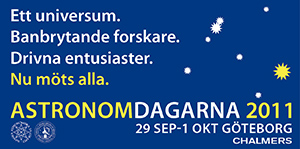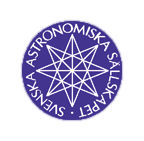Yngsta månkratern inte ens sextio år gammal?
Månkratrar måste skapas i parti och minut. Ingen atmosfär. En månyta som blir mer lik mjöl för varje sekund. Asteroider/meteorider som genom eonerna blivit allt småsmuligare.
Nedslagen måste ske och ge synliga resultat då och då, inga stora bumlingar men mindre.
För snart sextio år sedan (1953) såg den amerikanske amatörastronomen, läkaren Leon H Stuart – bild ovan – ett ljusfenomen på månytan, och det tros fortfarande – med vissa frågetecken – vara resultatet av en stor meteorit eller liten asteroid som slog ner. Inga teleskop på jorden kunde se nått då, men nu (= de senaste tjugo åren) tror vi oss ha sett spåren efter nedslaget:
En 20-30 m stor asteroid brände in på månytan och skapade en krater på 1-2 km.
Den fotografiska observationen på 8 sekunder från dr Stuarts sida – han lever inte längre; sonen Jerry Stuart förekommer ofta i debatten – har diskuterats fram- och baklänges, men den har aldrig egentligen avfärdats som omöjlig eller orimlig. Annars brukar alltid amatörastronomer få sån skit på sig.
1994 såg det kortlivade Clementine-projektets NASA-utsända månsond en krater i Stuarts-storleken på den misstänkta platsen, en krater som onekligen ser väldigt ny, fin och frisk ut.
Forskare som JPL:s Bonnie J Buratti et al utredde fenomenet så långt det gick för en sju-åtta år sen och förnekar inte möjligheten av en nästan dagsfärsk månkrater. Deras beräkning av läget, krockenergi, kraterns och kraterområdets utseende i dag m m passade som pusselbitar in i Stuarts historiska observation.
Det jag saknar är dagsaktuella bilder från alla sonder som snurrar runt månen. Var håller de hus? Hur ser en close-up ut? Pallas är en krater alldeles i närheten, har jag förstått.
Andromeda – från annan vinkel?
 En av mina bästa fotografvänner på Kvällsposten var “store Staffan”, legendaren Staffan Johansson.
En av mina bästa fotografvänner på Kvällsposten var “store Staffan”, legendaren Staffan Johansson.
Staffan fick en gång se en bild i en bok jag hade som visade Andromeda-galaxen, M31, och fotokritiske Staffan sa med glimten i ögat:
– Tänk om man kunde ha fotat den i en annan vinkel!?!
Tungt stöd för James Webb-teleskopet
 Alla “tunga” astronomisammanslutningar i världen sluter kring projektet med The James Webb Space Telescope, som USA-kongressen hotar att stryka ur NASA:s budget. Även vi i den svenska astronomiska communiteten borde ställa upp.
Alla “tunga” astronomisammanslutningar i världen sluter kring projektet med The James Webb Space Telescope, som USA-kongressen hotar att stryka ur NASA:s budget. Även vi i den svenska astronomiska communiteten borde ställa upp.
IAU, yrkesastronomernas international, gjorde tidigare i somras ett uttalande. IAU “lägger sig inte i” medlemsländers inreastronomiska angelägenheter men ansåg sig ändå kunna hålla med både American Astronomical Society, Canadian Astronomical Society och vår egen kontinents European Astronomical Society i dess kamp för JWST.
Citat från IAU-uttalandet:
“It is widely accepted that the Hubble Space Telescope and its discoveries have transformed astronomy and had enormous worldwide impact on the public appreciation of science. The JWST, as the proposed successor to the Hubble, has capabilities surpassing those of the Hubble and will enable astronomers worldwide to address the most pressing questions in modern astrophysics.
New technological advances by the JWST will enable fundamental discoveries of planets around other stars and the formation of the first structure in the early universe, topics of enormous public interest. It is seen by the astronomical community as a cornerstone of humanity’s exploration of the cosmos for the coming decades, and its importance to science cannot be overstated.
The IAU fully appreciates the current difficult economic times that now confront the world. Nevertheless, the IAU strongly supports the completion of this vitally important international project.”
Ett alldeles lagom uttalande för att komma från det hållet!
Här finns AAS-uttalandet och här kanadickernas.
EAS sa så här:
“European astronomers follow with great concern the evolution of the situation of the JWST project, as they are convinced that its cancellation would cause severe damage to the advancement of astronomy worldwide.
JWST promises to be one of the world leading instruments for the coming decade in astronomy. Following on the achievements of the Hubble Space Telescope, it will focus on the many questions related to the origins of planets, stars and galaxies. It is expected to be unsurpassed in scope and capabilities. In addition, many major developments in world astronomy, like the ALMA array and the giant telescope E-ELT, are being designed and developed taking into account the expected capabilities of JWST. Together these instruments will bring mankind to the next step in the understanding of the Cosmos. JWST is an essential part of this development. The loss of JWST would therefore damage astronomy in a major way in the USA, in Europe and in the world.
Many European astronomers and their funding agencies, together with colleagues in the USA and in Canada, have invested considerable resources and efforts in this project, in particular for the development of the MIRI and NIRSpec instruments. European astronomers within the instrument teams, and also very many others with no project involvement, have planned research programs for the coming years building on JWST capabilities, trusting that it will be launched as planned.
It would be a tragedy if JWST ended up as unfinished space hardware in a museum, leaving generations of future young scientists to wonder what “might have been” had it flown in space. Astronomers are hopeful and confident that solutions can be found that will do justice to the efforts and funds already invested worldwide in the JWST project.
The European Astronomical Society wishes to publicly express the concerns of its members about the current uncertainties affecting the development of the JWST mission. They also want to convey their hope that fruitful solutions will be found to complete and launch what promises to be a world leading astronomical observatory.”
Just i dag berättar NASA för övrigt att man fixat färdigt de första extremt tunt guldbelagda IR-känsliga speglarna. Så projektet fortsätter som om ingenting.
Planet dränks i röntgenstrålning
Det kan ju inte vara kul at bo på planeten CoRoT-2b, för den utsätts för mördande röntgenstrålning av sin stjärna – allt detta enligt Chandra-sondens studie av solen, kallad CoRoT-2a.
Avståndet mellan sol och planet uppskattas till 3 procent av solen-jordens, och det låter ärligt talat inte hälsoamt. Partikelströmmen är också därefter.
Stjärnans härda röntgenfotoner är så häftiga att de sliter bort 5 mijoner ton materia från planeten – varje sekund.
Göteborgs-dagarna snart här!
All info om Astronomdagarnas “var, när och hur?” finns här!









